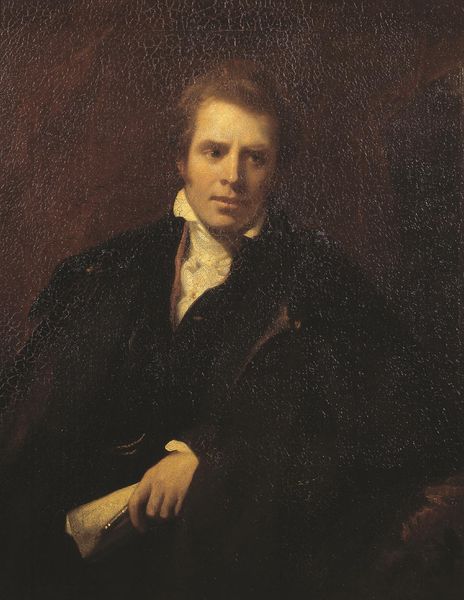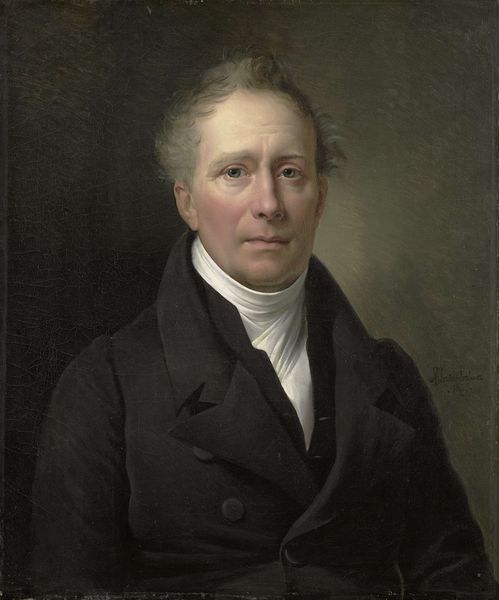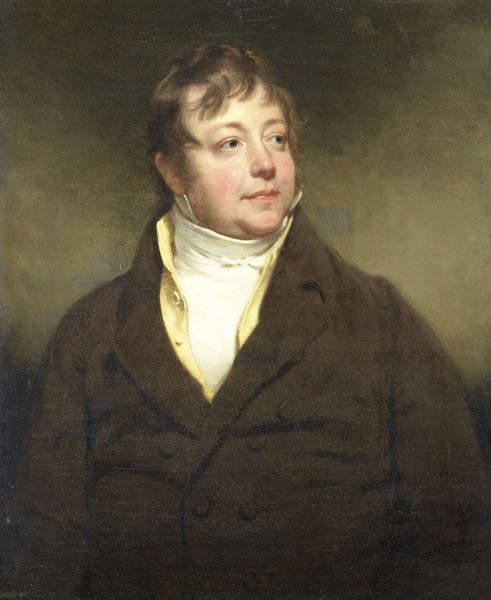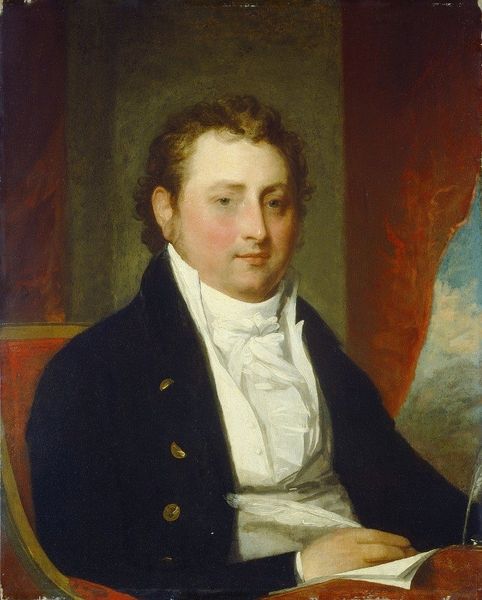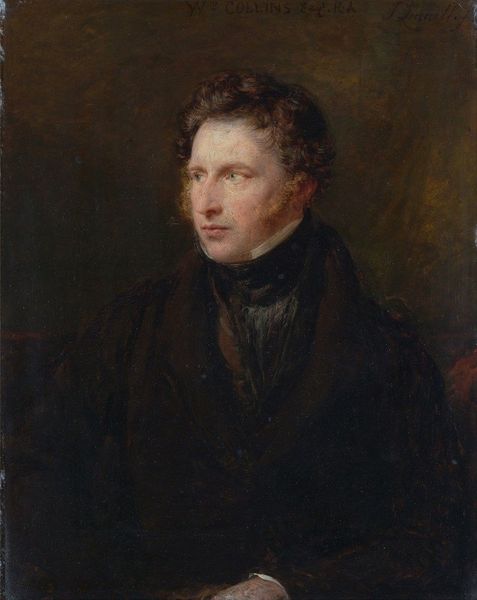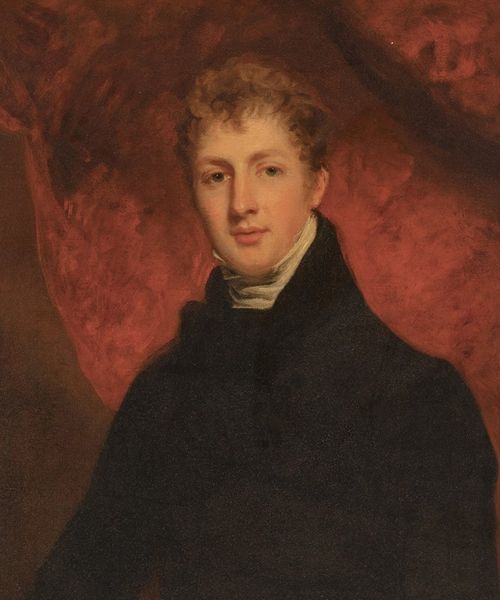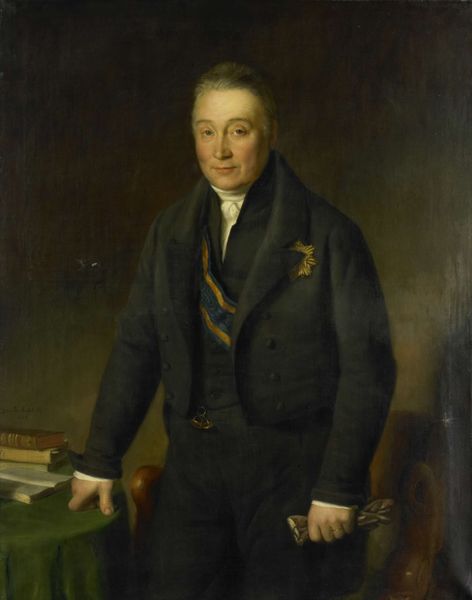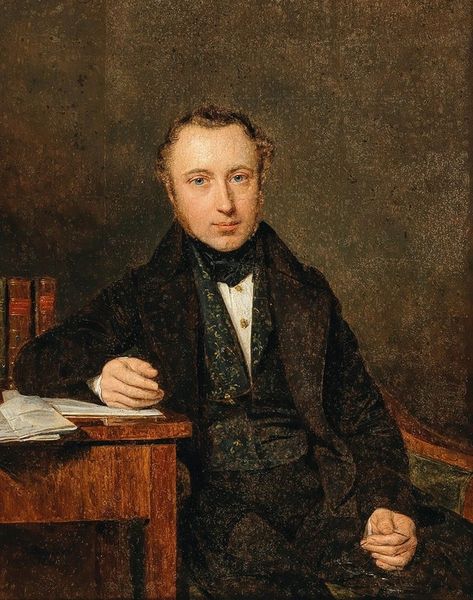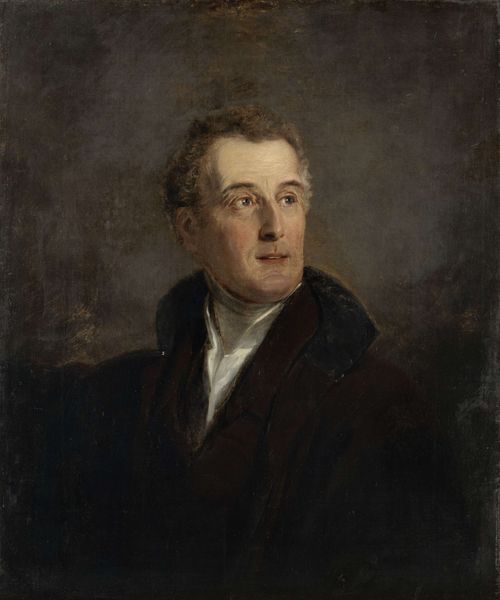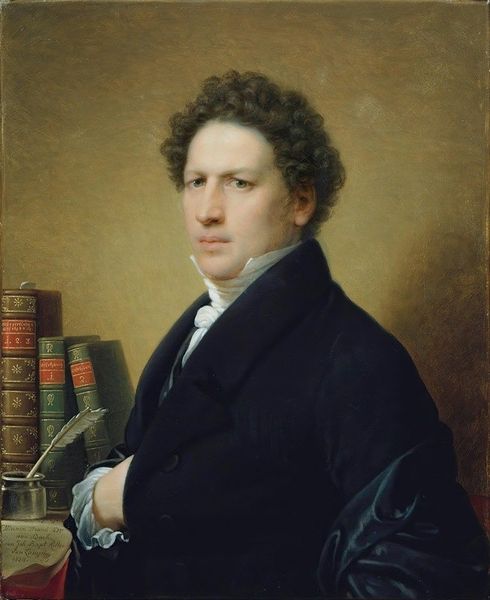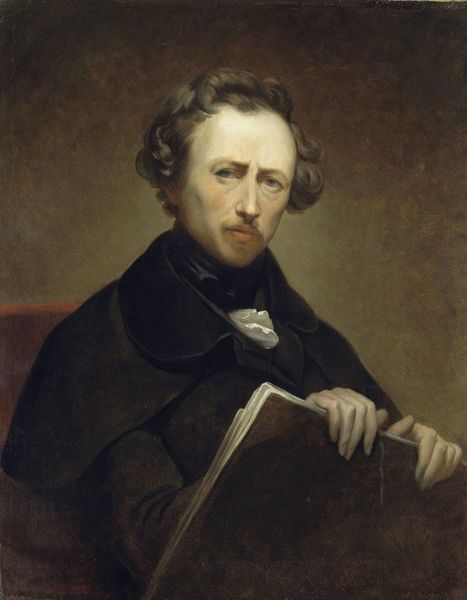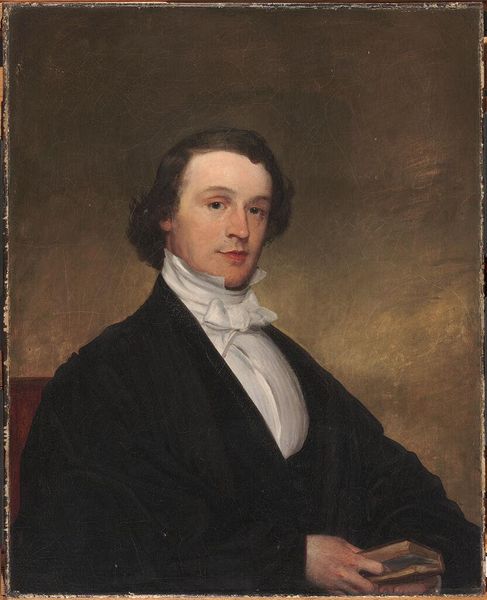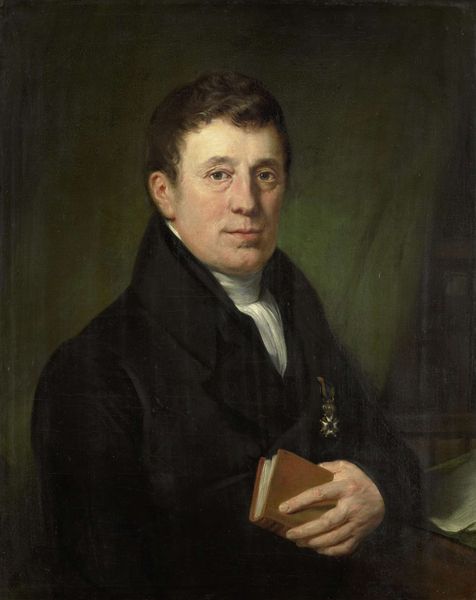
Portrait of a Man, perhaps Petrus Augustus de Genestet (1829-1861) 1830 - 1860
0:00
0:00
painting, oil-paint
#
portrait
#
painting
#
oil-paint
#
romanticism
#
genre-painting
#
realism
Dimensions: height 40 cm, width 33 cm, depth 11 cm
Copyright: Rijks Museum: Open Domain
Curator: So, we’re looking at a painting here in the Rijksmuseum: a "Portrait of a Man, perhaps Petrus Augustus de Genestet," made sometime between 1830 and 1860, attributed to Nicolaas Pieneman. Editor: Immediately, I see someone self-assured. But also… terribly burdened? The muted colors almost feel like a weight on him, pressing down. Curator: That gravity comes, in part, from Pieneman’s dedication to realism. The detail in the man's clothing, the slightly rumpled book in his hand—these ground him in a tangible reality, even though his identity is still debated. He is believed to have been a minister. Editor: Tangible, yes, but consider the labour embedded. That meticulously rendered waistcoat; think of the weaving, the tailoring, the hours involved in creating and maintaining that garment. The fine grain of the paper of that little book; what stories could that book tell about the trees from which it comes from, to the workers involved in its process? It's a snapshot of industrial capitalism, if you will. Curator: Indeed, it’s a glimpse into the aspirations of the time. The somber palette evokes this sense of the sitter taking himself and life incredibly seriously. It is a work of genre painting blended with Romanticism and early Realism painting that seems introspective to me, don’t you think? He holds this closed book, there's something reserved here. I wonder, does he see the point in opening his heart to the world? Editor: And what sort of materials are supporting all of this profound seriousness? Canvases primed, pigments mixed from who-knows-where, all those brushes cleaned, and varnishes applied by unnamed, faceless artists’ assistants…The history of art often overlooks the hands that make the final, "artistic" statement possible. Curator: I love the speculation about the human context behind the scenes in creating the work. When you put it like that, these portraits are like these iceberg tips above water, each layer hiding a submerged world that speaks about more people and materials. Editor: Right. Ultimately, isn’t an artwork a nexus point, really? And Pieneman captured so much material context within this painting that helps tell his story. Curator: Beautiful. For me, thinking about these paintings opens something tender inside, especially wondering about the sitter and whether this version of himself met his own aspirations. Editor: For me, I am intrigued about the whole operation and social reality that made possible the making of this image. A story of capital and materials to serve human creation.
Comments
No comments
Be the first to comment and join the conversation on the ultimate creative platform.
